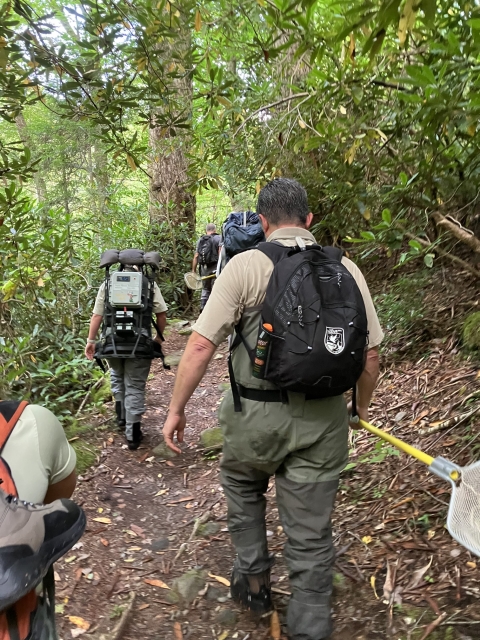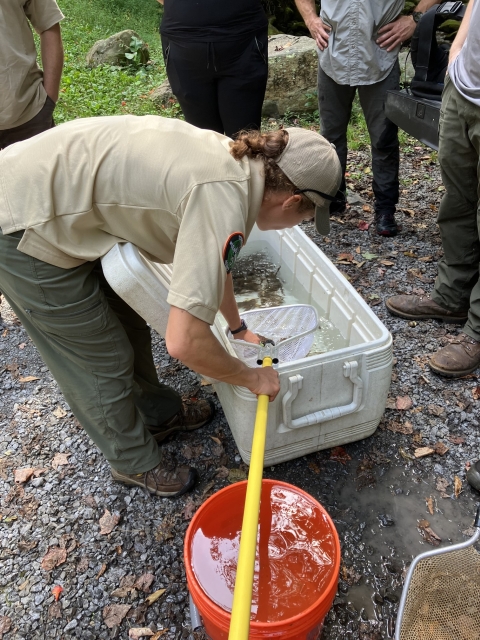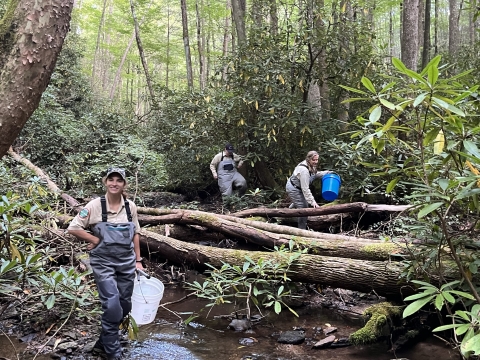Southern Appalachian Brook Trout are a native strain of Brook Trout that are genetically distinct from their northern counterparts. These trout are much smaller than the northern trout, and will only grow to about 6-8 inches in length. The Southern Appalachian Brook Trout have faced historical declines due to deforestation and introductions of non-native trout. There are many efforts through out the southeast to restore these fish. On September 20th a joint effort was undertaken to relocate native Brook Trout from Great Smokey Mountains National Park to Cherokee National Forest. Staff from the National Park Service, US Forest Service, the Tennessee Wildlife Resources Agency, and the US Fish and Wildlife Service all met at the Great Smokey Mountains NP to collect trout for relocation.
Native Brook Trout are often found in high-elevation headwater streams. This means that biologists have to hike into sites to assess and collect these fishes. This relocation effort was no different. Participants in the effort were divided into three groups, and each hiked to a different stream to collect fish. Fish were collected at each site through backpack electrofishing. Electrofishing is a survey technique where an electrical current is discharged into the water, which will temporarily stun fish and cause them to float to the surface.
Fin clipping were taken from a sub-sample of the trout that were collected. These clippings will be used to inform biologists about the genetic diversity of the source Brook Trout populations.
The fish were then hiked down the trail and were driven to a central location, where they were counted and bagged for travel.
Finally, the trout were ready to be taken to their new home. They were loaded up on trucks, and were driven to Little Paint Creek. There Tennessee Wildlife Resource Agency and US Forest Service Staff released the fish into their new home.
Little Paint Creek is now home to a Southern Appalachian Brook Trout population. This site was selected due to a lack of non-native trout and barriers preventing non-natives from migrating upstream. Reintroducing species to their former range is an important conservation effort. Restoring these trout to their former range is one key step to bringing back our amazing biodiversity.






